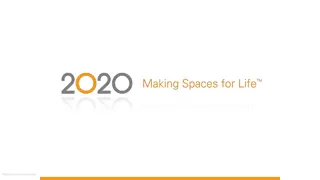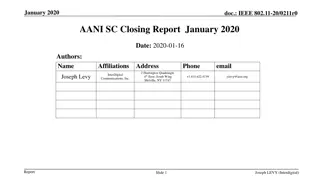
Orthographic Drawing View Selection Guide
Learn how to select the appropriate views for orthographic drawing, including front view selection criteria, adjacent views considerations, and important notes for effective representation of objects. Understand the importance of choosing views with minimum hidden lines and optimal dimensioning space on a drawing sheet.
Download Presentation

Please find below an Image/Link to download the presentation.
The content on the website is provided AS IS for your information and personal use only. It may not be sold, licensed, or shared on other websites without obtaining consent from the author. If you encounter any issues during the download, it is possible that the publisher has removed the file from their server.
You are allowed to download the files provided on this website for personal or commercial use, subject to the condition that they are used lawfully. All files are the property of their respective owners.
The content on the website is provided AS IS for your information and personal use only. It may not be sold, licensed, or shared on other websites without obtaining consent from the author.
E N D
Presentation Transcript
Orthographic writing Procedure 152 Front 45 1. Decide the suitable number of views 20 Top 2. Layout the decided views on a drawing sheet. 64 152 Choose a drawing scale (say 1:1) 3. Draw details of each selected views. y Front y 4. Write dimensions and , if any, notes. x x z y Top y x x
Front view selection The longest dimension of an object should be presented as a width (in an front view). First choice Second choice appropriate It requires less space Inappropriate It requires More space
Front view selection 2. The adjacent views projected from the selection elevation view should be appeared in a natural position. Inappropriate
Front view selection 3. It has the fewest number of hidden lines. Good Inappropriate
Selection of other views with the front view 1. Choose the adjacent view that has the fewest number of hidden lines. Inappropriate Inappropriate
Selection of other views with the front view 2. Choose the minimum number of views that can represent the major features of the object. NOT GOOD - Hole s information is placed on a separated view. FRONT VIEW RIGHT SIDE VIEW Necessary Necessary GOOD -All hole s information is placed on a single view. TOP VIEW
Selection of other views with the front 3. Choose the views that are suitable to a drawing sheet. Poor Not enough space for dimensioning. Good Change orientation of the selected views. Choose another adjacent view. Good
Examples on view selection
Important Notes 1. Generally, three views of orthographic drawing are enough to describes an object s information. 2. In some specific cases, a necessary view may be less or more than three views.
Objects require only one view 1. Flat (thin) part having a uniform thickness such as a gasket, sheet metal etc. Example 1 Thick Adjacent views provide only a part s thickness !
Objects require only one view Cylindrical-shaped part. Example 2 Example 1 Deduce from center line Repeat !
Objects require two views 1. Identical adjacent view exists. 2. The 3rdview provides no additional information Example 1 Repeat !
Objects require two views 1. Identical view exists. Example 1
Objects require two views 2. The 3rdview provides no additional information Example 2
EXAMPLES FOR ORTHOGRAPHIC PROJECTIONS
FRONT VIEW SIDE VIEW TOP VIEW
FRONT VIEW SIDE VIEW TOP VIEW
FRONT VIEW SIDE VIEW TOP VIEW
FRONT VIEW SIDE VIEW TOP VIEW
FRONT VIEW SIDE VIEW TOP VIEW
FRONT VIEW SIDE VIEW TOP VIEW
FRONT VIEW SIDE VIEW TOP VIEW
FRONT VIEW SIDE VIEW TOP VIEW
SIDE VIEW FRONT VIEW TOP VIEW



















